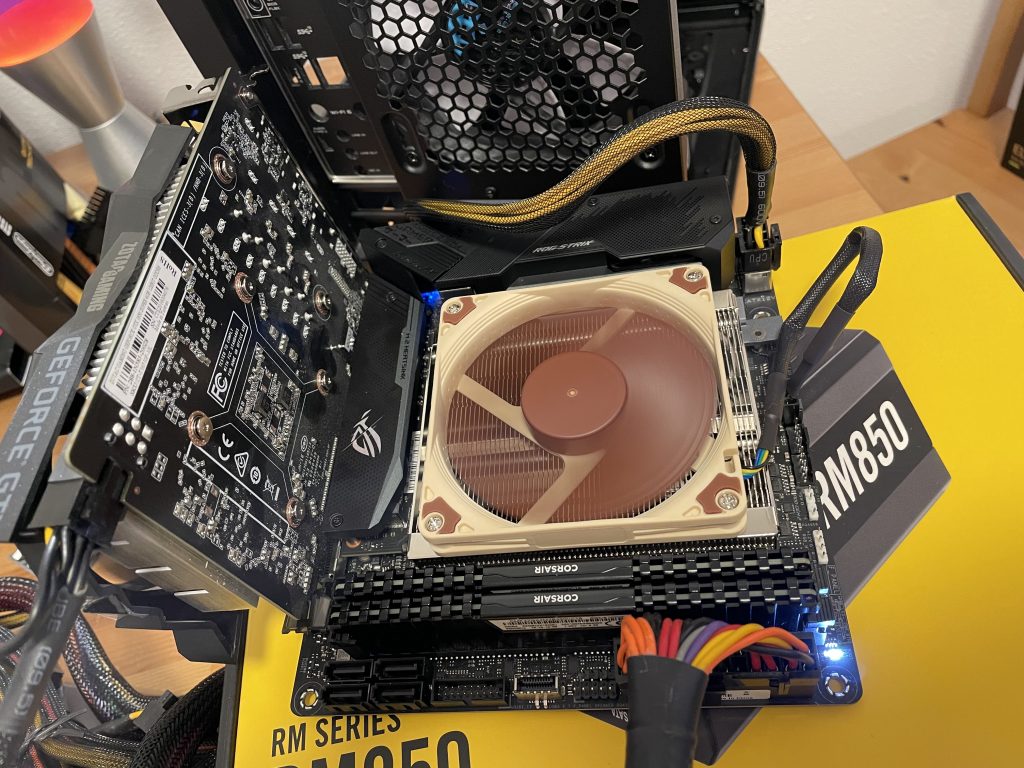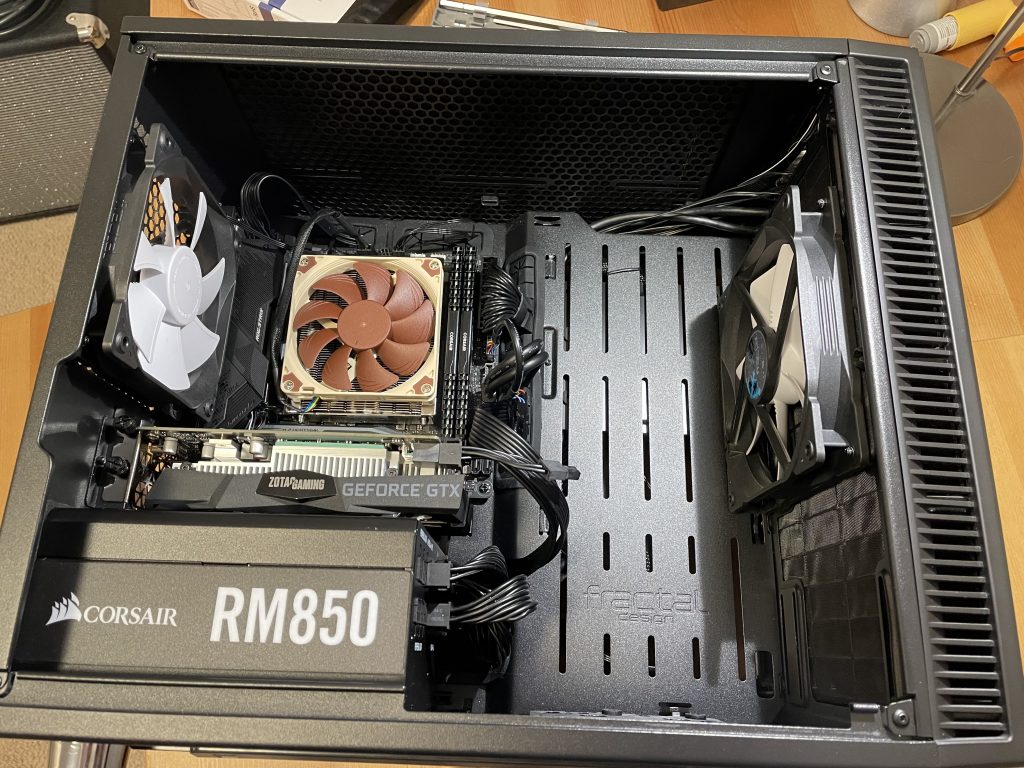I missed updating last weekend due to reasons. Nothing really to update anyway.
This weekend however is a different matter, because after six years, I finally have a new PC.
The last time I built, I had settled on an ITX board and case because I was starting to fall out of love with the idea of having a mammoth PC capable of handling anything and everything. My build in 2011 (which I sadly do not seem to have the pictures for anymore) was in a large case, included multiple video cards in SLI, multiple hard drives, and a DVD burner. It was a nice build, but the case was also extremely heavy and the PC as a whole was capable of things that frankly I did not need it to be capable for. I don’t think I ever even burned any DVDs, for example.
So I went small in 2015 with the intent to focus on just the ability to play the occasional game. It served the purpose just fine, but building inside the Fractal Node 304 case was an absolute pain:
- The case is deep rather than tall, with the mainboard and power supply essentially sitting right next to each other on the floor inside. The board’s SATA ports were facing out from the board right into the power supply, so I had to right-angle connectors and very carefully jam everything together in order to hook up the drives.
- There was nowhere to cable manage anything, so I ended up with a rat’s nest of cables just hanging out in the area where you’re supposed to mount drives.
- The board never quite managed booting off of an M.2 drive on a consistent basis; if I cold booted the machine I’d get a bluescreen, but soft resets afterwards would boot just fine.
Then in the intervening years since that build, what I needed out of a PC shifted again as I focused gaming more on consoles and computing more on Macs. That is to say, I didn’t need a PC at all except in the odd occasions where a Steam game was only available on Windows or I needed to do some development work.
So with all those in mind, after thinking about the Steam Deck for a few minutes and deciding I needed something a bit more general purpose, I settled on the following:
- ASUS ROG STRIX B550-I board
- Ryzen 7 3700X CPU
- Noctua NH-L9a cooler
- Zotac GTX 1650 super
- Corsair LPX DDR4 RAM (32GB)
- 2x Samsung 970 EVO M.2 drives (250GB)
- Fractal Define Nano S case
- Corsair RM850 power supply
The Define Nano S case seemed to have an answer for everything I didn’t like about the Node 304. It’s still an ITX case, but it’s more of a traditional vertical design, so the mainboard and power supply are stacked vertically instead of sitting right next to each other. I’d say that solves the clearance issues I was having with SATA cables, but now the build doesn’t have SATA drives in it so that’s a moot point. But the case does have space for cable management around the back, so I can run things from the power supply behind the tray.
The higher core/thread count on the CPU vs. the Intel Core i5-6600 I used to have is greatly appreciated for the odd weekends when I need to do some development work or spin up some virtual machines for one reason or another. Turns out four cores/four threads just aren’t enough to go around. The Noctua cooler was easy enough to install, and even though the fan is a weird babyshit brown color, it’s going in a case with no windows so nobody can see it anyway.
And speaking of no windows, I’d just like to point out that PC components are getting awfully gaudy now. I built a PC back in 2002 that had a blue lamp on the inside of it, and the novelty of the thing wore off after a couple weeks. Now everything has RGB lighting on it; case fans, graphics cards, memory, mainboards, everything. Even the stock cooler that came with the CPU this time had RGB lighting. Maybe it’s just me getting old, but I really appreciate a solid black box that draws no attention to itself.
The graphics card is actually a holdover from the old build; GPU prices are still too high for me to stomach at the moment. My immediate plans for the PC involve the Final Fantasy Pixel Remasters and other games that run fine on older graphics cards, so the need there isn’t quite as dire.
Memory is actually a holdover as well; although I couldn’t solve CPU core count right away when I needed to do some dev work last summer, I could at least solve a lack of RAM by throwing as much as the old board would support at it. 32GB is already quite a lot even for what I was doing, so no plans to throw a 64GB kit in anytime soon.
The two M.2 drives are configured in RAID 0 so they present as a single 500GB drive to the OS. This seems somewhat finicky from what I’ve seen so far. If you don’t load the AMD raid drivers when you install Windows, the OS will instead see the drives individually and treat them as two separate drives. Then when you duck back into the BIOS later, instead of having your one RAID 0 array, you now have three RAID arrays – the one you intended to have, and two more that you didn’t intend to have. But once you sort out how to get everything working, it works. I’m still amused that we can have hard drives that are the size of a stick of gum and that we can mount directly onto the mainboard without needing to run cabling to them. That’s very helpful in keeping the build as clean as possible.
To combat the rat’s nest part of the equation, I opted for a fully modular power supply in this build. Now the only cabling in the case is what’s actually required… except for the second PCI-E lead on the cable used to plug in the GPU. That’s been neatly tucked away though.
At any rate, with the board out on the table and all components plugged in, we have a successful POST, as indicated by the solid white light in the bottom corner:

Doing everything out in the open first is better than mounting all the parts in the case and then discovering there’s a faulty component, or worse, a faulty board.
And here’s everything installed and cable managed into the new case.


